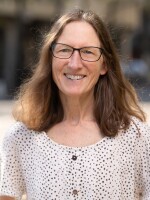The vast majority of Oregon’s school districts have only one high school. Officials at the Oregon Rural School Network believe those schools get less attention, and have different needs than urban districts. They aim to create a network of support.
At Santiam Canyon High School, Superintendent Todd Miller says classical music isn’t offered.
“They weren’t looking for a traditional orchestra, band type class. They really wanted pop music, current music so we do kinda run a rock, pop music program.”

Miller says the biggest drawback to being a small district is lack of capacity. “We don’t have quite the resource of larger schools. A lot of times, we have to get very creative to support the kids as we need to.”
Santiam Canyon has about 600 students in two buildings. It pulls from a huge geographic area in the Cascade foothills east of Salem including Mill City, Detroit and Marion Forks.
“You kind of feel on an island a little bit," says Miller. "A lot of times as a school leader you don’t have those people to even just bounce ideas off of.”
Enter Mike Garling. “Just getting teachers is hard, getting specialists is really difficult, and then they really don’t get access to deep, embedded professional learning opportunities,” says Garling.

He's the Coordinator of the Oregon Rural School Network. He began working with state-identified focus schools years ago. More recently, his group has partnered with Eugene-based nonprofit Inflexion to provide services to supplement Educational Service Districts.
“Theoretically an ESD is supposed to provide some support," says Garling, "but an ESD may have one staff development type person, and there may be 10 or 11 rural districts in their ESD region.”

Garling organizes a group of nine so coaches to visit the districts they support and work alongside the staff. “Leaders are very isolated, and the leaders are wearing a bazillion hats.”
Case in point, Erika Vaughn, who says, “I am the Director of Instruction, Professional Development, Curriculum, Assessment, Technology. I think I got them all.”
Vaughn is with the Junction City School District. She says the Network has been especially helpful with Professional Development. “Aside from coaching, I think they have their finger on the pulse of what is happening in schools," she says. "They’re really aware of what the needs are, and they do it in a way that is building capacity of people.”
The Student Success Act passed in Oregon’s 2019 legislative session is set to dole out a billion dollars a year to schools. The challenge for rural schools is that the application for grants is unwieldy. Vaughn says the Rural School Network has stepped up.
“They’ve seen the need and they’re like ‘how can we help rural schools get through this application?’ It’s like 89 pages long and it’s 13 steps. We are getting some great funding and there’s going to be accountability, I understand why they have that, but it’s just more challenging for rural schools.”

In Mill City, Todd Miller agrees. He says applying for funding is just one more thing.
“We have the same requirements as a big district," says Miller, "yet we don’t have the teams of people to do the work.”
On the plus side, says Miller, a rural school can serve as an anchor for the community. His district passed a bond last year to upgrade their buildings. "I thought one of the beautiful things about the school bond measure is that, it’s a tax," says Miller, "and when you have local lumber companies who are going out and writing op-eds telling people to support this, I mean that’s not something that you generally see.”
Mike Garling thinks that’s key. The Network helps schools create an identity. They have districts solicit feedback from students, staff, parents and other community members.
“The big aha has been realizing how much of an impact that we have not just on the school but we could have in the community. We’ve got relationships now that’re really positive, and it’s all about these kids.”
Garling says the Oregon Rural School Network has bigger goals for next school year. They’re looking for grants and foundation support to serve 32 districts across four geographic regions of the state.






